- Home
- Gore Vidal
Death Likes It Hot
Death Likes It Hot Read online
DEATH LIKES IT HOT
Gore Vidal
as
Edgar Box
Gore Vidal is the author of twenty-four novels, six plays, two memoirs, numerous screenplays and short stories, and well over two hundred essays. His United States: Essays, 1952–1992 received the National Book Award.
Books by Gore Vidal
NOVELS
Williwaw
In a Yellow Wood
The City and the Pillar
The Season of Comfort
A Search for the King
Dark Green, Bright Red
The Judgment of Paris
Messiah
Julian
Washington, D. C.
Myra Breckinridge
Two Sisters
Burr
Myron
1876
Kalki
Creation
Duluth
Lincoln
Empire
Hollywood
Live from Golgotha
The Smithsonian Institution
The Golden Age
AS EDGAR BOX
Death in the Fifth Position
Death Before Bedtime
Death Likes It Hot
NONFICTION
Inventing a Nation
SHORT STORIES
A Thirsty Evil
Clouds and Eclipses
PLAYS
An Evening with Richard Nixon
Weekend
Romulus
On the March to the Sea
The Best Man
Visit to a Small Planet
ESSAYS
Rocking the Boat
Reflections Upon a Sinking Ship
Homage to Daniel Shays
Matters of Fact and of Fiction
The Second American Revolution
At Home
Screening History
United States
The Last Empire
Perpetual War for Perpetual Peace
Imperial America
MEMOIRS
Palimpsest
Point to Point Navigation
FIRST VINTAGE CRIME/BLACK LIZARD EDITION, MARCH 2011
Copyright © 1954, 2011 by Gore Vidal
All rights reserved. Published in the United States by Vintage Books, a division of Random House, Inc., New York, and in Canada by Random House of Canada Limited, Toronto. Originally published in hardcover in the United States by E. P. Dutton & Co., Inc., New York, in 1953.
Vintage is a registered trademark and Vintage Crime/Black Lizard and colophon are trademarks of Random House, Inc.
This is a work of fiction. Names, characters, places, and incidents either are the product of the author’s imagination or are used fictitiously. Any resemblance to actual persons, living or dead, events, or locales is entirely coincidental.
Library of Congress Cataloging-in-Publication Data
Box, Edgar, 1925–
Death likes it hot / by Gore Vidal as Edgar Box.
p. cm.
eISBN: 978-0-307-74270-4
I. Title.
PS3543.I26D44 2011
813′.54—dc22
2010042349
www.blacklizardcrime.com
Cover design: Evan Gaffney Design
Cover photograph: Superstock
v3.1
Contents
Cover
About the Author
Other Books by This Author
Title Page
Copyright
Introduction
Chapter One
Chapter Two
Chapter Three
Chapter Four
Chapter Five
Chapter Six
Chapter Seven
Chapter Eight
Introduction to
DEATH LIKES IT HOT
In the early 1950s, Victor Weybright, then an editor at E. P. Dutton, suggested that Gore Vidal try writing a mystery novel under a pseudonym. Inspired by writers like Agatha Christie, whose work he knew well, Vidal took the suggestion and began writing mysteries under the name “Edgar Box.” (Edgar suggests Edgar Wallace, the creator of the mystery story; Box is from an actual family that Vidal had recently met.) In all, he wrote three books as Box, each of them featuring the dashing public relations man and amateur sleuth, Peter Sargeant II. Death Likes It Hot was the third and final book to feature Sargeant, who finds himself up against a killer hiding out in the Hamptons.
Death Likes It Hot was the successor to the first two appearances of Peter Sargeant II. He had already demonstrated his talents as a sleuth in Death in the Fifth Position and Death Before Bedtime—novels that proved commercially successful and did a good deal to keep me afloat during the years when, for unpleasant reasons, I was blackballed by the New York Times, making it difficult for me to find an audience. Like most writers, I sometimes find myself in worlds that seem to present themselves as wonderful subjects for satirical treatment, and at that point in the early ’50s nothing was quite so fetching as the Hamptons. It was home to a new generation of “advance guard,” as they insisted on being known. This part of Long Island was famous for painters such as Jackson Pollock, and other disturbers of the peace, who soon made themselves national stars on one stage or another. I felt that my increasingly robust character, Peter Sargeant, would fit in nicely with their compulsive performing.
During the writing of Death Likes It Hot, I was spending more time than was wise in the Hamptons, a piece of expensive real estate largely ignored by the media in those days although it had been for some time a playground for artists, writers, theater and film people, and various hangers-on—some of them extremely rich—who like to associate with the artsy crowd. The parties were, of course, fabulous, but it was easy to lose one’s way in that thicket, as my hero in this novel would discover.
But the voice of Edgar Box continued to buzz in my head after I had finished its two predecessors, and Death Likes It Hot, the third novel in the series, came in a rush. Again, I was writing about what lay before me, thus following the familiar advice of my editor at Dutton. “Write what you know,” he had said. I knew the Hamptons and its sumptuous, frenetic world. I had met the people who lived in those large houses, and their speech was familiar to me. And so I thought it might be a very good idea for Peter Sargeant to mix business with pleasure on a lively weekend in the Hamptons—the details were close at hand. This book is very much in the Agatha Christie vein, of course, with a cast of characters who might all be guilty parties. The guest list is not accidental at the particular house party at the center of the book. Sargeant inadvertently finds himself among a dangerous and seductive coterie of guests—people who are not quite as congenial as they might appear at first glance. One expects the usual treachery in these circumstances, but what happens is much worse than he imagined. The guests seem obsessed with their new form of amusement, which is usually known as murder. But it’s only a game for these people, a game of life or death.
—Gore Vidal, 2010
CHAPTER ONE
1
THE death of Peaches Sandoe the midget at the hands, or rather feet, of a maddened elephant in the sideshow of the circus at Madison Square Garden was at first thought to be an accident, the sort of tragedy you’re bound to run into from time to time if you run a circus with both elephants and midgets in it. A few days later, though, there was talk of foul play.
I read with a good deal of interest the Daily News’ account. A threatening conversation had been overheard; someone (unrevealed) had gone to the police with a startling story (unrevealed) and an accusation against an unnamed party. It was very peculiar.
Miss Flynn, my conscience and secretary, elderly, firm, intolerant, ruthless but pleasingly gray, looked over my shoulder as was her wont.
“You will not, I presume …”
“Get involved in this grisly affair? No. Or at least not until I’m asked which is unlikely since the circus has its own public relations setup …”
“It’s possible that some member of the circus, however, knowing your propensity for Shady Personages and Crime might engage your services …”
“They’ll have to catch me first. Miss Flynn, I’m gone.” I stood up abruptly; she looked bewildered … wondering if perhaps I had gone over to the world of be-bop: Miss Flynn is a student of argot though her own conversation is very courtly, cool in fact.
“I’m gone for a week,” I explained.
She nodded, understanding at last. “You’ll accept Mrs. Veering’s invitation to partake of the sun at her palatial estate on Long Island?”
“Just this moment decided. No reason to hang around here. August is a dead month. We haven’t any business you can’t handle better than I.” She inclined her head in agreement. “So I’ll go out to Easthampton and see what it is she wants me to do.”
“Social Position has never been Mrs. Veering’s aim.” Miss Flynn is a resolute snob and follows with grim fascination Cholly Knickerbocker’s rich accounts of the rich.
“Well, she won’t be the first dowager we put over on an unsuspecting public.”
Miss Flynn scowled. Next to my affinity for Shady Personages and Crime she dislikes nearly all the clients of my public relations firm: ambitious well-heeled characters trying to exploit products or themselves in the press. With the exception of a singing dog who lost her voice, my record has been pretty good in this crooked profession. Recently business had slowed down. In August New York dies and everybody tries to get out of the heat. Mrs. Veering’s mysterious summons had come at exactly the right time.
“Alma Edderdale, I know, is a friend of yours … and a dear one of mine … it was at the advice of a friend of hers that I got your name. I do wish you could come see me here Friday to spend the week end and talk over with me a little project close to my heart. Let me know soon. Trusting you won’t let me down, I am, sincerely yours, Rose Clayton Veering.” That was the message on thick expensive note paper with the discreet legend at the top: “The North Dunes, Easthampton, Long Island, N.Y.” No hint of what she wanted. My first impulse had been to write and tell her that I’d have to have a clear idea before I came of what she wanted. But the heat of August relaxed my professionalism. A week end in Easthampton, in a big house.…
I dictated an acceptance telegram to Miss Flynn who snorted from time to time but otherwise said nothing.
I then fired a number of instructions in my best business-executive voice, knowing that in my absence Miss Flynn would do exactly as she pleased anyway. Then we gravely shook hands and I left the office: two small rooms with two desks and a filing cabinet in East 55th Street (good address, small office, high rent) and headed down Park Avenue through the sullen heat to my apartment on 49th Street (big rooms, bad address, low rent.)
II
The Long Island Cannon Ball Express pulled away from the station and there was every indication that it would be able to make Montauk before nightfall; if not … well, those who travel that railroad are living dangerously and they know it. Cinders blew in my face from an open window. The seat sharply cut off the circulation in my legs. The hot sun shone brazenly in my face … it was like the days of my childhood fifteen years (well, maybe twenty years) before, when I used to visit relatives in Southampton. Everything had changed since then except the Long Island Railroad and the Atlantic Ocean.
The Journal American was full of the Peaches Sandoe murder case even though there were no facts out of which to make a story. This doesn’t bother newspapers, however, and there were some fine pictures of naked girls wearing sequins and plumes. Peaches Sandoe herself was, in life, a rather dowdy-looking, middle-aged midget with a 1920’s bob.
I was well into the N.Y. Globe’s account, written by my old friend and rival Elmer Bush, when a fragrant thigh struck mine and a soft female voice said, “Excuse … why if it isn’t Peter Sargeant!”
“Liz Bessemer!” We stared at one another in amazement though why either should have been particularly surprised I don’t know since we see each other at least once a month at one party or another and I have, on several occasions, tried to get a date out of her without success since I’m shy and she is usually engaged to some young blade around town. Though it was perfectly logical that we both find ourselves on a Friday heading for a week end on Long Island by Cannon Ball Express, we professed amazement at seeing each other.
Amazement turned to excitement, at least on my part, when I found she was visiting an aunt and uncle in Easthampton. “I just had to get out of the city and since Mummy is out in Las Vegas getting a divorce” (Liz though a big girl of twenty-five with blue eyes and dark brown hair and a figure shaped like a Maiden-Form Bra ad still refers to her progenitress as “Mummy” which is significant, I think), “and I wasn’t invited any place this week end, I just thought I’d go on out and stay with my aunt who’s been after me all summer to visit her. So you’re going to be there too?”
I nodded and we kicked that ball around a bit. She knew of Mrs. Veering, even knew her place which, it seemed, was about half a mile down the road from where she would be staying. I experienced lust, mild but persistent. Mentally, I caressed the generous arm of coincidence.
“I hope you’re not a friend of Mrs. Veering’s … I mean, she’s perfectly nice but, well, you know.…”
“Kind of on the make?”
“That’s putting it gently.” Liz made a face; I noticed she was wearing nothing under her simple worth-its-weight-in-gold cotton dress; absolutely nothing, at least from the waist up. I felt very good about this for some reason and decided Christian Dior was a regular fellow after all.
“Well, it’s only a job,” I said vaguely, as we rattled desperately through Jamaica. “She’s got some project or other she wants me to look into for her. So, what the hell … it’s a living and I get out of town for the week end … maybe longer,” I added softly but Liz, according to legend at least, is the least romantic girl in New York and though she’s gone around with some sharp boys in her time and no doubt given them a certain satisfaction, she has never been the type to hold hands in the moonlight or exchange radiant myopic glances across crowded rooms. She’s very matter-of-fact which I like, in spite of the “Mummy” business.
“That’s right.” She looked at me coolly, at least as coolly as it’s possible to look with the cinders flying about your head and the heat one hundred degrees Fahrenheit in the car. “You have your own firm, don’t you?”
I nodded. “Ever since I left the Globe.”
“It must be awfully interesting,” she said in the vague tone of Bryn Mawr. “I’m at Harpers Bazaar now.”
I said I didn’t know she worked.
“Oh yes … every now and then.”
“What do you do there?”
“Oh … well, you know: that sort of thing.”
I knew indeed. All New York is the richer for these vague elegant girls with some money, a set of Tecla pearls and a number of basic black dresses who, while marking time between college and their first marriage, work for the fashion magazines. They are charming and they love art like nobody’s business … zooming around the galleries on 57th Street to look at pictures and around Second Avenue to various “fun-apartments” where High Bohemia gives cocktail parties for Edith Sitwell and worries about Marlon Brando.
Liz was a member in good standing of this community but she was also careful not to get typed: she was not one of the fashionable ugly girls who end up making a career out of that kind of thing; she kept the lines of communication open with the young Wall Street set, the Newport gang, the Palm Beach crew and even the night-club bachelors who think that 57th Street is just something you pass on your way from the Plaza to the St. Regis.
We talked about mutual acquaintances. I haven’t the time to circulate much in her world
but I know it well enough since it’s made up of old school friends of mine as well as those professional zombies that you’re bound to meet sooner or later if you live in New York and go out at all.
It wasn’t until we had stopped for water, or whatever it is the train stops for besides passengers at Speonk, that I asked her what she knew about Mrs. Veering.
“I don’t think I know anything about her except what everybody does. You see her around, that’s all. She comes from somewhere out West and she has a lot of money from a husband who’s dead, I guess. I suppose she’s out to make the grade as a dowager.”
This was as much as I knew about my hostess-to-be, so we talked of other things, agreeing to meet Saturday night at the Ladyrock Yacht Club where a big dance was being held. It was assumed I’d come as a guest of Mrs. Veering but just in case she didn’t go I said I’d sneak over somehow. Liz thought this was a fine idea.
Then we read our tabloids while the train passed millions of white ducks and potatoes, the principal crop of this green island.
Shortly before we arrived at Easthampton, we both agreed that someone had undoubtedly pushed Peaches Sandoe in the way of that elephant. But who?
III
The North Dunes is a large gray-clapboard house sitting high on a dune to the north of the Ladyrock Yacht Club which, in turn, is north of the village.
I was met by a slovenly fellow in a chauffeur’s hat and Overalls who spotted me right off and said Mrs. Veering had sent him to fetch me. I climbed in the station wagon which was parked with all the others beside the railroad, waved to Liz who was getting into a similar station wagon and sat back as I was driven in silence through the handsome village with its huge elm trees and silver pond and the house where somebody did not write Home Sweet Home but was perhaps thinking about it when he did write the song.
On the ocean front, one vast gloomy house after another sat among the treeless dunes where clumps of sword grass waved, dark upon the white sand. The lush green-gold course of the Maidstone provided a neat, well-ordered touch to the road which runs north of the village toward Montauk Point, a road off which, to left and right at this point, are the big houses and the cottages of the summer residents.

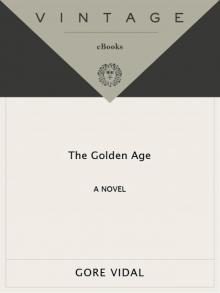 The Golden Age: A Novel
The Golden Age: A Novel Death Before Bedtime
Death Before Bedtime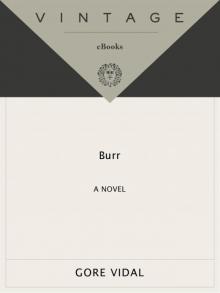 Burr
Burr The Last Empire
The Last Empire Empire: A Novel
Empire: A Novel The Selected Essays of Gore Vidal
The Selected Essays of Gore Vidal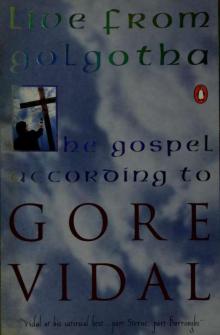 Live From Golgotha
Live From Golgotha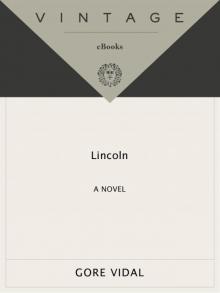 Lincoln
Lincoln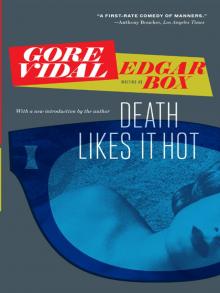 Death Likes It Hot
Death Likes It Hot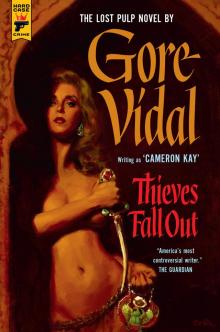 Thieves Fall Out (Hard Case Crime)
Thieves Fall Out (Hard Case Crime) Point to Point Navigation
Point to Point Navigation Williwaw
Williwaw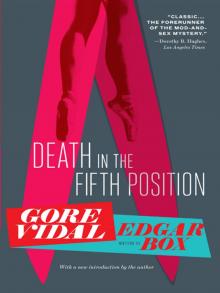 Death in the Fifth Position
Death in the Fifth Position In a Yellow Wood
In a Yellow Wood Julian
Julian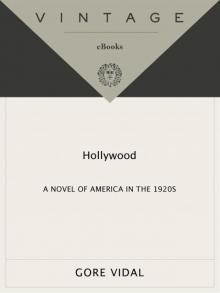 Hollywood
Hollywood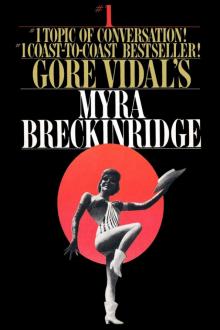 Myra Breckinridge
Myra Breckinridge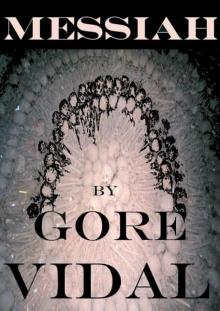 Messiah
Messiah The Second American Revolution and Other Essays 1976--1982
The Second American Revolution and Other Essays 1976--1982 Homage to Daniel Shays
Homage to Daniel Shays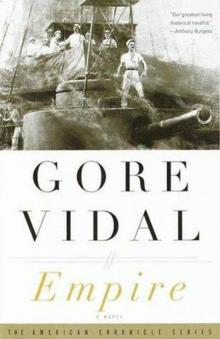 Empire
Empire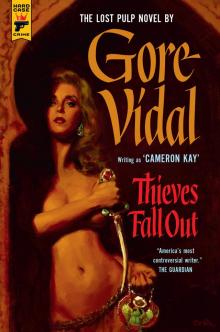 Thieves Fall Out
Thieves Fall Out 1876
1876 The City and the Pillar
The City and the Pillar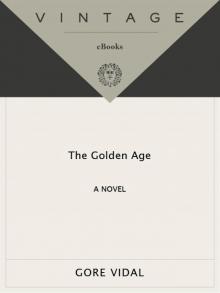 The Golden Age
The Golden Age At Home
At Home